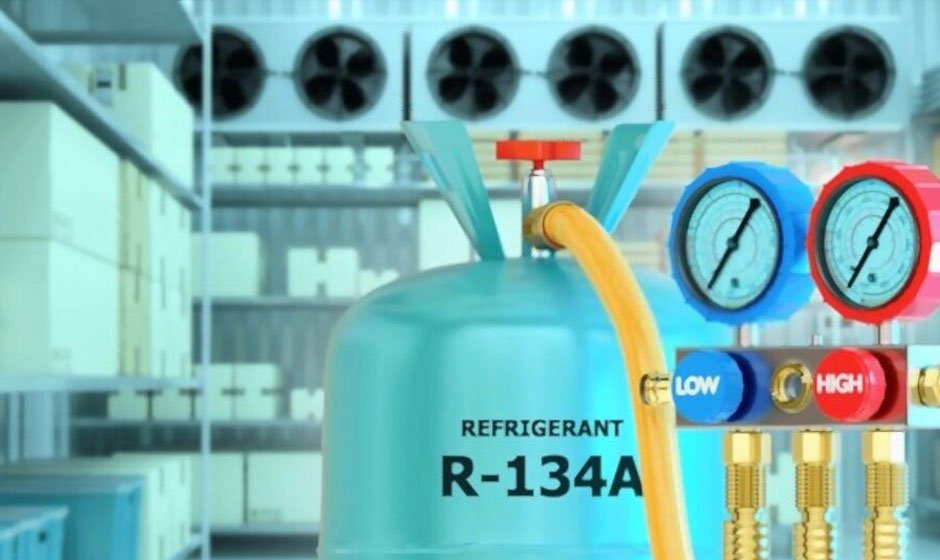R134A Refrigerant: Properties, Uses, and Environmental Impact

As you shop for air conditioning refrigerant, you may feel a little overwhelmed. Most vehicles on the road use one of two refrigerant types: R134a or R1234yf. Choosing the proper refrigerant and AC recharge kit is as simple as knowing which type your vehicle takes. From there, maintaining your system is easy. Keep reading to learn more about AC refrigerant and how you can keep your climate control system in top condition.
Common Uses and Applications
R134a became standard in American vehicles during the 1990s. As a newer refrigerant, R134a replaced the older R12 formula that had been in use since the early 20th century.
The Problem With R12
While R12 was an effective coolant, scientists discovered that it depleted the ozone layer in the 1970s. The problem lay in R12’s chlorine atoms, which detach from its chemical composition when exposed to UV radiation. Those chlorine atoms then interact with ozone in the atmosphere, breaking it down. With less ozone present, more harmful UV radiation reaches our planet’s surface.
R134a’s Improved Formula
While R12 is a chlorofluorocarbon, R134a is a hydrofluorocarbon. The critical difference lies in the absence of ozone-depleting chlorine atoms. R134a also delivers better cooling efficiency and is compatible with a wide range of refrigerant applications. Moreover, R134a is also less toxic and less flammable than R12. Without unstable chlorine atoms, R134a is less likely to catch fire and cannot form toxic substances such as chlorinated volatile organic compounds and oxygenated pollutants.
Environmental Impact & Safety Considerations
New discoveries and technological advancements have led to the development of R1234yf, which has been the standard in US vehicles since 2013. While R134a air conditioning systems cannot be retrofitted to use R1234yf, understanding the difference between them is still crucial. Purchasing the correct R134a or R1234yf recharge kit ensures that your AC keeps running safely and efficiently.
An Overview of R1234yf
R1234yf is a hydrofluoro-olefin refrigerant. It offers better energy efficiency than R134a. With their improved formulas, R1234yf refrigerants are non-toxic and far less likely to deplete the ozone layer. They also have a lower global warming potential: R1234yf has a rating of 1 GWP, compared to R134a’s GWP of 1300. R1234yf traps the same amount of energy in the atmosphere as carbon dioxide, but R134a traps 1300 times more energy than CO2.
AC System Leaks
No matter how safe a refrigerant’s formula is, system leaks are still problematic. Leaks diminish your climate control’s efficiency and pose a health risk: Inhaling refrigerant fumes can lead to nausea, vomiting, headaches, and even death. These fumes can also pollute the atmosphere. Just like learning how to fix coolant leaks is vital to your engine performance, fixing AC refrigerant leaks is also key. Your preferred auto parts retailer offers A/C refrigerant stop-leak products to seal leaks and keep your system running.
Proper Maintenance for Cool Comfort
Your vehicle’s AC cools your cabin during hot weather, but ensuring that it stays functional depends partly on you. Using the correct refrigerant is a vital component of regular maintenance. Changing your air filter, watching for leaks, and performing regular recharges are also critical to enjoying cool comfort during hot weather.



